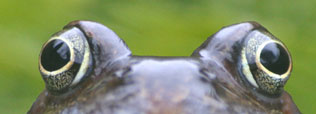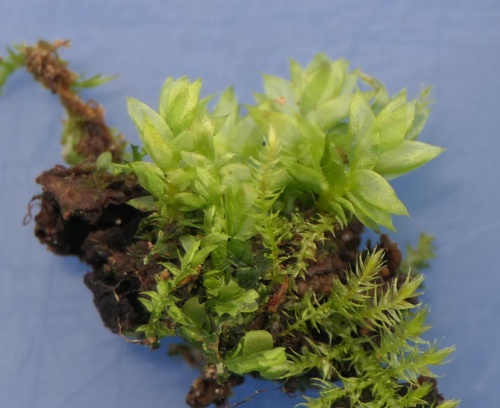Woodsy Silk-moss - Plagiothecium nemorale
Plagiothecium nemorale has sparsely branched shoots arranged in one plane. The leaves are 2 to 3.2 mm long, egg-shaped to narrowly egg-shaped, and are mostly more or less symmetrical. The nerve is weak and double, although it may reach as far as mid-leaf. P. nemorale is typically a dark, dull green.
Unless identified by a recognised expert, a photo is required and the specimen should be examined with a microscope. In the comments box, state the key or ID method used and describe the size and identifying characters.
On soil, directly on siliceous rock and limestone, and on tree bases; able to grow in a wide range of conditions, in acidic to calcareous habitats, but avoiding the most strongly acidic places. Most often in woodland, but also in mossy overhangs and amongst boulders in upland districts; occasionally in springs.
All year.
Widespread and fairly frequent in Britain.
Status in Leicestershire and Rutland not known.
Leicestershire & Rutland Map
Enter a town or village to see local records
MAP KEY:
Yellow squares = NBN records (all known data)
Coloured circles = NatureSpot records: 2025+ | 2020-2024 | pre-2020
UK Map
Species profile
- Common names
- Woodsy Silk-moss
- Species group:
- Mosses & Liverworts
- Kingdom:
- Plantae
- Order:
- Hypnales
- Family:
- Plagiotheciaceae
- Records on NatureSpot:
- 3
- First record:
- 10/11/1991 (Dennis Ballard)
- Last record:
- 24/03/2018 (Nicholls, David)
Total records by month
% of records within its species group
10km squares with records
The latest images and records displayed below include those awaiting verification checks so we cannot guarantee that every identification is correct. Once accepted, the record displays a green tick.
In the Latest Records section, click on the header to sort A-Z, and again to sort Z-A. Use the header boxes to filter the list.


